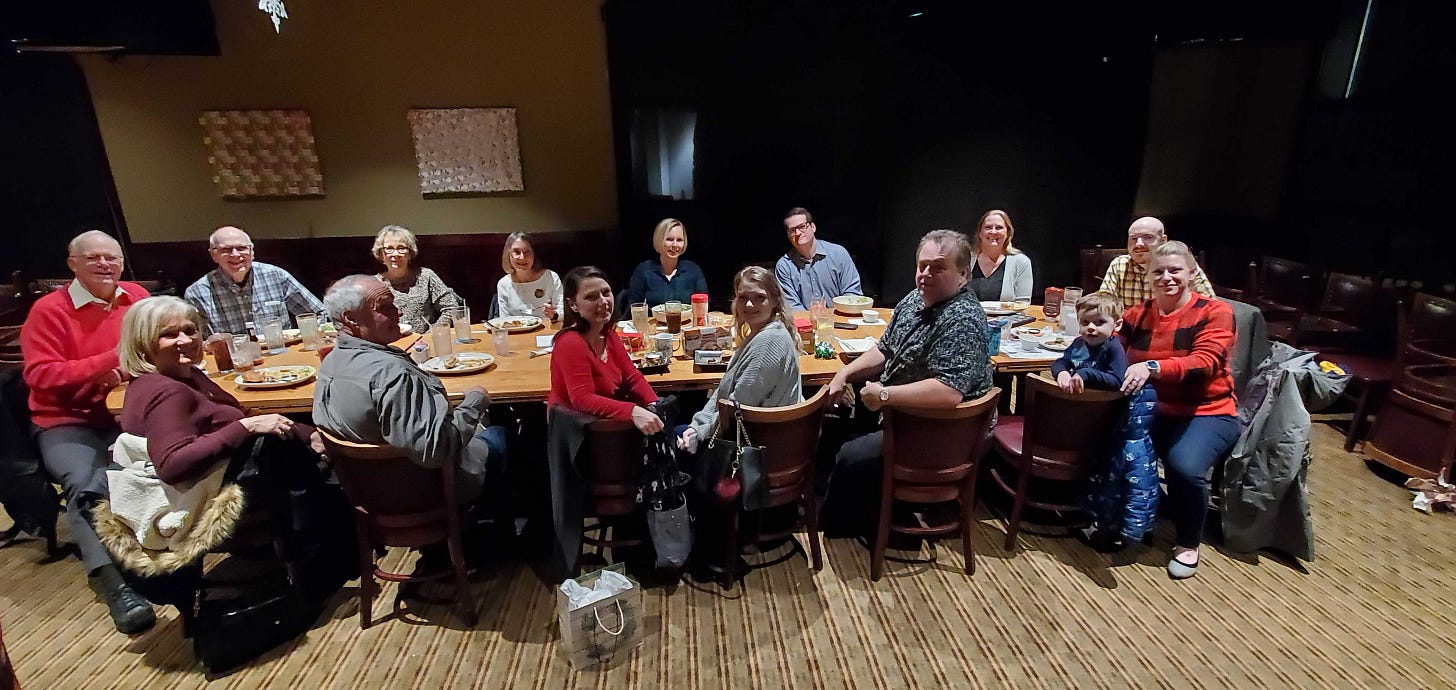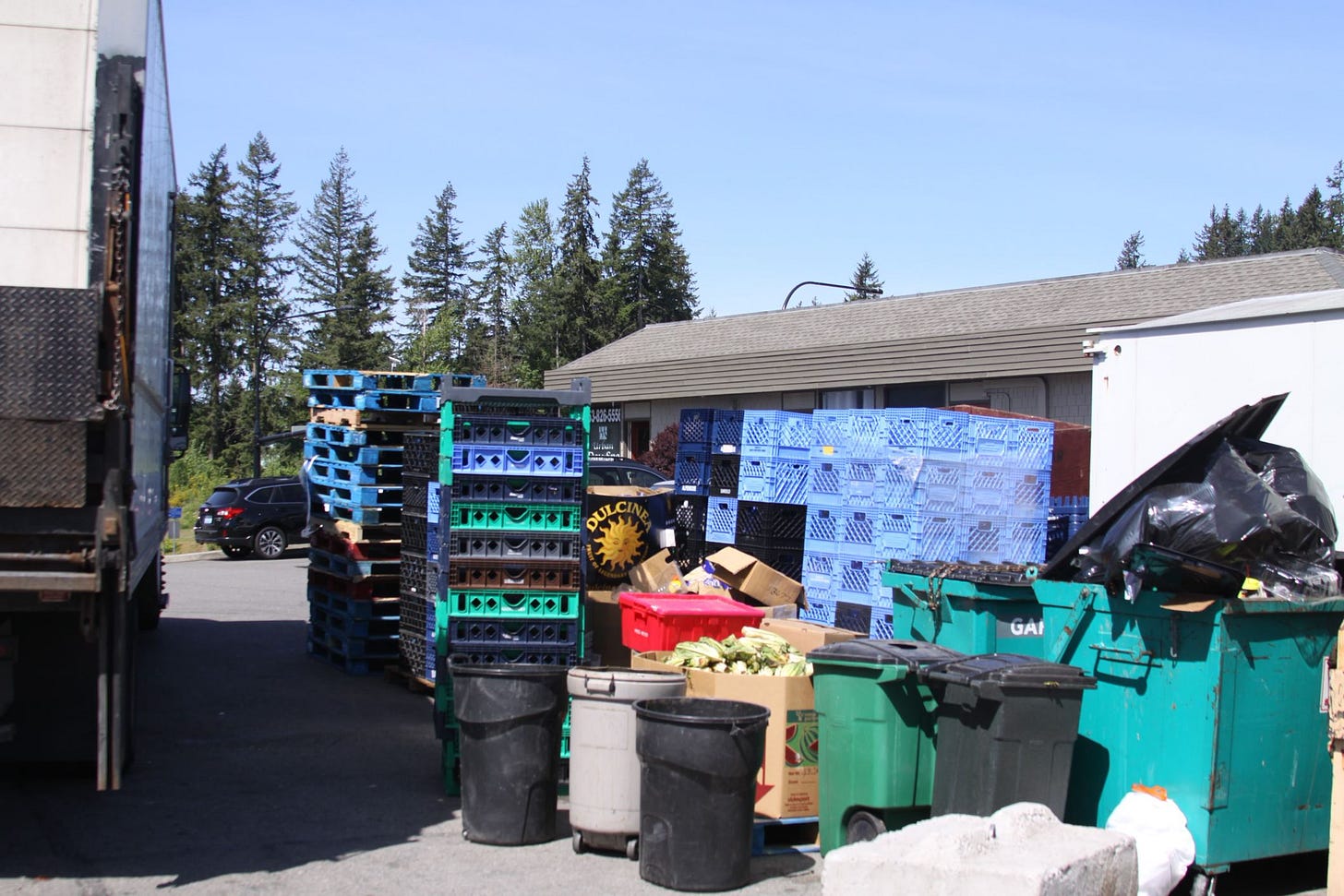This post will be the first in a series of four that will explain (from my humble perspective) the story of The Bonney Lake Food Bank and how it all came to be.
The idea for these subsequent updates came to me after a conversation with Bill Pugh, a current board member, while we chatted at The Market a few weeks back as we waited for the arrival of the governor to visit. Bill reminded me that while many of my memories of these last four years are fresh in my mind, many may not realize how far we have come (and how close we came to fading away.)
So here it is. This is told from my perspective (the only one I know), but it’s a community story made possible by many of you that believed, against all odds, the impossible could be achieved.
Broken Windows
My first encounter with the Bonney Lake Food Bank was sometime during the Summer of 2018. As I described in Jenson’s Song, I have been a guitar player my entire life but never had a reliable drummer, so when my oldest turned 6, I was like, “you’re the drummer,” and enrolled him at the local music school right across from the pile of rocks where the old food bank used to stand. One day as I waited on him to get out of his lesson, I decided I would take a random walk across the parking lot, and that chance decision changed my life forever.
What I discovered on the other side of that parking lot was a case study example of broken windows. If you are not familiar with this concept, it says that visible signs of disorder and neglect create an environment that perpetuates itself, and, over time, you will find that building becomes a shell of what it used to be. This concept is described through the lens of a building, but it’s about the impacts a community can see if not attended to over time. This was the current state of the Bonney Lake Food Bank; rotting food everywhere, garbage piled high, and a generally depressed state of existence that led none that entered to believe there was hope for better tomorrows.
Let me be clear: this is not a jab at anyone who worked there at the time; many volunteers and key staff are still with us today. This is more an example of what once was a trusted and vital institution that, somewhere along the way, lost the community's trust and attention, fell through the cracks, and started to wither away. I believe this is Phase 1 of our organization and a period I call The Macro Low.
The Macro Low
I convinced the owner of my company to let me take a crew to the food bank two times a month and do what we could help. He looked at me like I was crazy (many people did during this time), but I thought it would be a good way for our team to build relationships and make a difference in the community. I was trying to do what I could help and, along the way, saw the courageous contributions of many key volunteers doing the same. It seemed that for any positive impact, the negative inertia of our situation quickly erased those gains. That was very hard to watch, let alone accept.
After a few months of volunteering, I decided to attend my first board meeting, and just when I thought things couldn’t be any worse, I realized we had something like $20K in the bank and were a matter of months from completely going under. If I remember correctly, this was in early 2019, around January or February.

For some crazy reason, and honestly against all my better judgment, I decided I wanted to try and do something about it. I joined the board and started to meet with different team members and community stakeholders. Of all these meetings, the one I will never forget is when Teri Hochstein and I met in a Starbucks (the one by BECU in Bonney Lake). Teri was not at my first board meeting, so I thought connecting and getting her perspective would be a good idea.
It took a few minutes with Teri to realize those still waters run very deep. After an hour or so of conversation, I felt we both walked away from that meeting feeling we found a partner ready to take action and do something … and do something we did. I was elected the Board President a few months later, in June of 2019; in that same meeting, Teri was elected Board VP.
Phase 1
As I looked at our organization and assessed our challenges, it was quite different from the leadership role with a mid-sized technology firm I was used to playing. Instead of worrying about things like employee KPIs, training plans, profit margins, and company growth, I was worried about the following:
How do we get all this rotten food scraped from the parking lot?
How do we still serve those that depend on us and be good neighbors to those around us?
How do we keep this dilapidated “haunted house” of a building standing and meeting health standards of some kind?
How do we keep funding coming in to sustain an organization bleeding money every month with no hope in sight?
Luckily for me (and for the Bonney Lake Food Bank), we had Teri and her superpower (one of them anyway, I am convinced she has several) of strategic planning. As we started to address the “urgent/important” aspects of our dire current state, we also built a strategic plan and first-level policies and procedures to help strengthen organizational maturity.
Even though clean-up was happening slowly and surely, the problem of sustainability (specifically money coming in the door). We were not seeing the momentum we needed, and we started to discuss what a graceful exit would look like internally. In the fall of 2019, I vividly remember a board meeting where we contemplated closing the doors altogether if we didn’t hit some very specific (and seemingly unachievable) financial targets by the end of the year.
Here’s a video that was shot in the midst of all of this during Beautify Bonney Lake in 2019:
This was a very emotional time for many of us. There were emergency board meetings and hard decisions on the table that none of us wanted to confront. I remember losing a lot of sleep during this period in my life and wondering how it could even be possible for us to make it out of the predicament that we found ourselves in.
Hail Mary
The winter of 2019 was upon us, and the Holidays would be our last stand. We determined that it would take something like $50K raised by the end of December for us to stand a chance to move forward and keep the doors open into 2020. We were short-staffed and struggling to have enough volunteers and staff to cover our regular hours of operation. Add to this waining supplies of food and dwindling cash reserves, and you have a recipe for despair.
This was the coldest winter of my life (and I am not referring to the temperatures).
The core team continued to grow, and we pulled together with the help of this community. As others came and saw the work being put in, we started to gain back trust slowly. Donations began to flow in, and we could serve the community's needs at a time when they needed us most.

The examples I witnessed of the human spirit humble me to this day and have wholly changed my perspective on hope and perseverance in hard times. As I will describe in future posts in this series, these lessons were needed as the hard times continued (they just took different forms).

I remember the Christmas of 2019 as one where I appreciated my blessings more than any previous. I knew we left it all on the field, and no matter what happened when we counted it all up, I was happy with the effort and hopeful it would be enough for us to see 2020 and beyond.
A New Hope
We not only met our financial targets for the end of 2019, but we exceeded them. Donations and support from the community continued to pour in, and we significantly improved the food bank's operations and facilities. I forget the final total, but I know it was just north of $50K, mostly from individual donations and a few corporate donors like Derek Eyering and the team from John L Scott.
As we worked through the Holiday Season, we had been pursuing hiring a new Executive Director. The last applicant to apply was named Stacey Crnich. Stacey sent her application in at 10 PM on 12/31, two hours before the cutoff. Right on time, as far as I am concerned.
The team responsible for the Executive Director search was led by Todd Allen, a longtime friend of the Bonney Lake Food Bank Family and a newly minted member of our board. Todd brings a wealth of experience in Human Resources and organizational planning, and we have tapped him more times than I can remember to help with all kinds of “interesting” situations over the years (Todd might have some different ideas for an adjective to use there).
As that group worked through their process, it became apparent that Stacey was the right choice and would be asked to fill the role. In classic Bonney Lake Food Bank fashion, she had no experience working for non-profits or with food banks, a natural fit for an organization that was starting to build our reputation as one that breaks the mold and steps outside the traditional ways of “how things should be done.”
Stacey's first day was 2/21/2020. This date, to me, marks the end of Phase 1 and the beginning of a new phase in our organization. As I will talk about in a future post, this phase was marked by rapid growth and progress despite the headwinds of a global pandemic and the constraints of our current state.
It’s never been easy, but nothing worthwhile is. Our problems today are much more challenging than rotten fruit being scraped off the asphalt (and much more satisfying as we overcome them.) There’s an important life lesson in there that I will carry with me for the rest of my days on this Earth.
- Jenson






